Dell XPS 17 (2020) review: A big laptop for big jobs
Dell’s big, bold and expensive XPS 17 tries to tackle tough work tasks with more style than most
-
+
Fantastic looks
-
+
Top-quality 4K display
-
+
Good battery life
-
+
Satisfying keyboard
-
-
Very expensive
-
-
Missing key features
-
-
Rivals are faster
-
-
Heavier than competitors

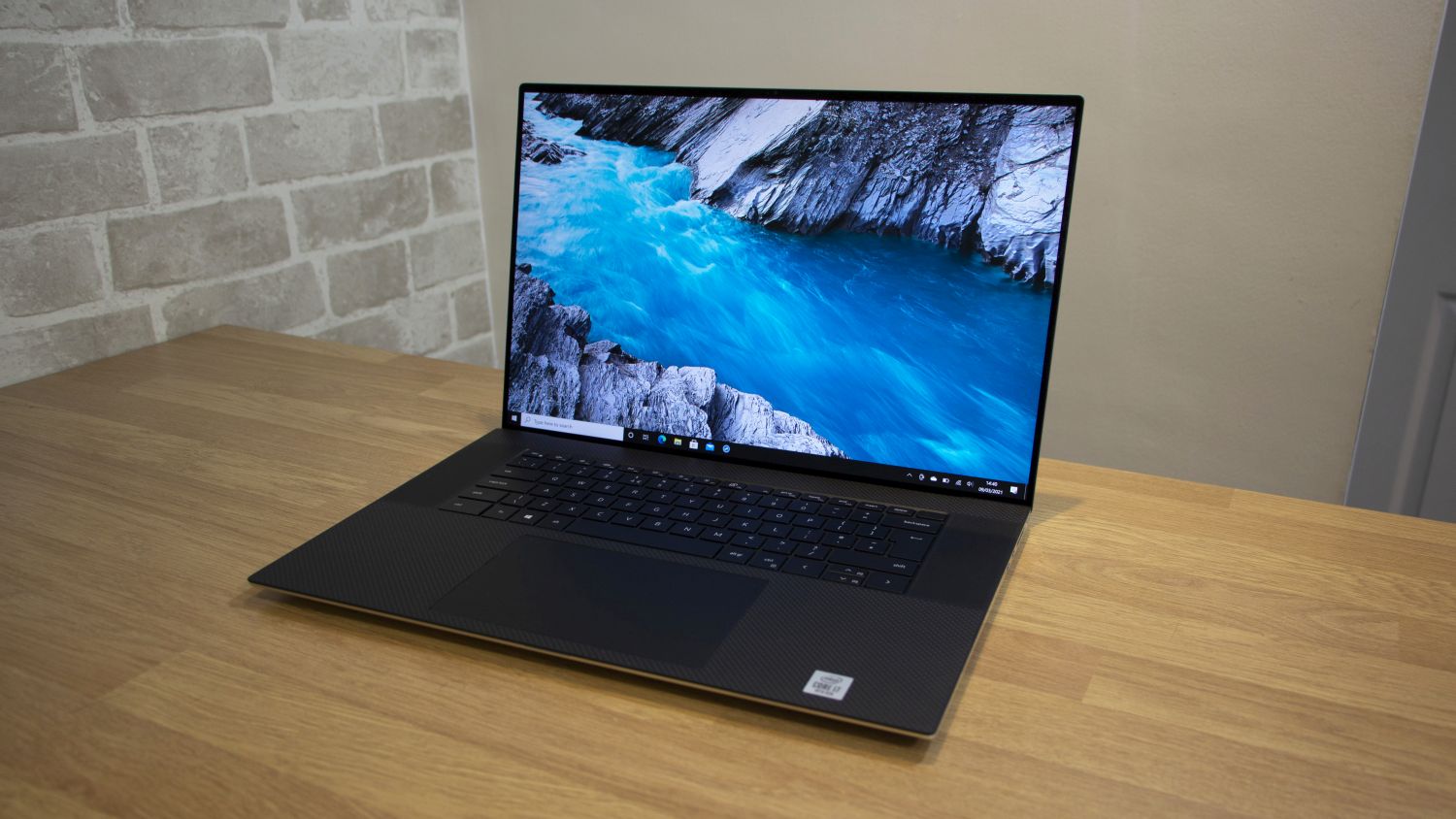
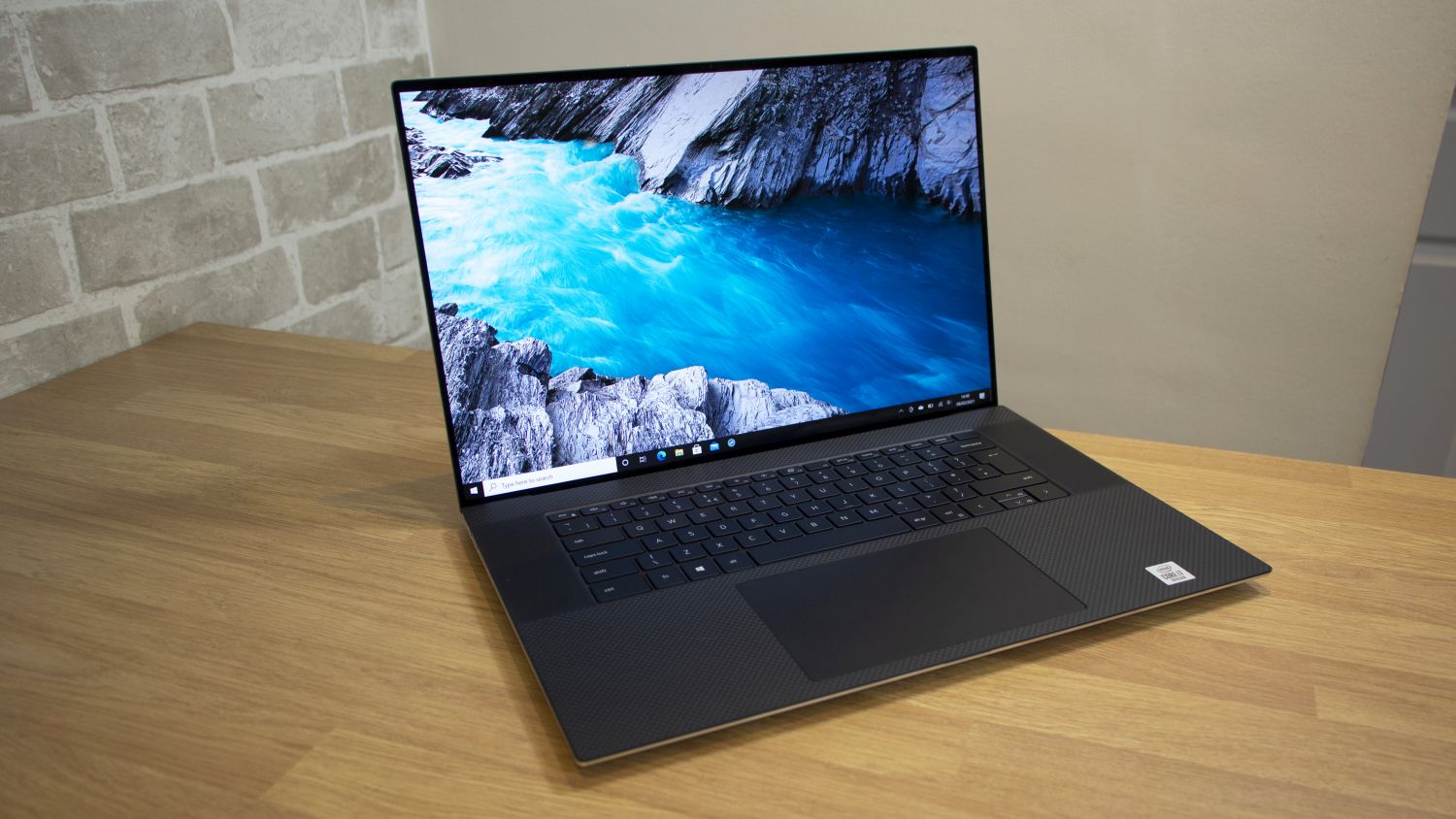
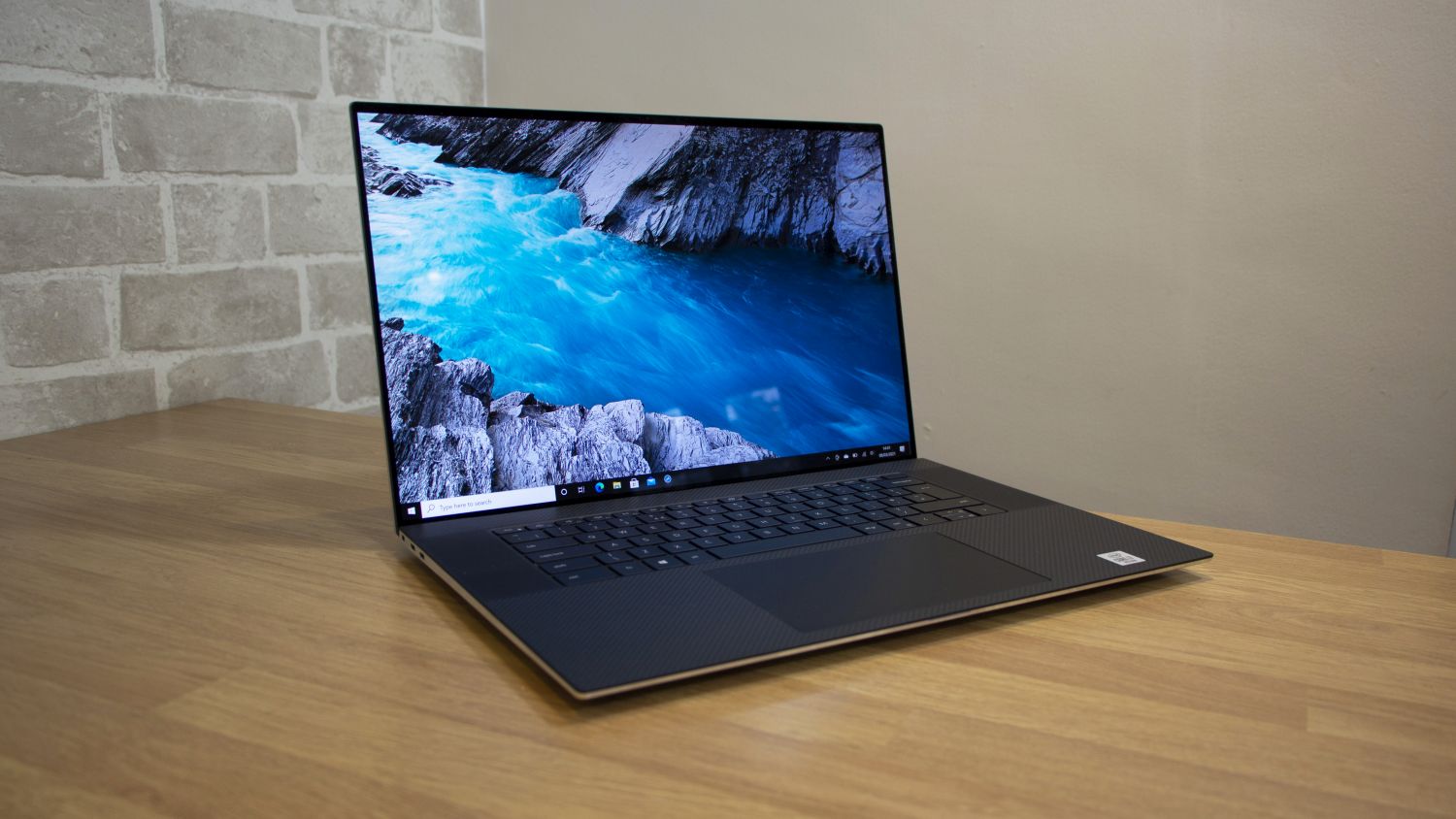
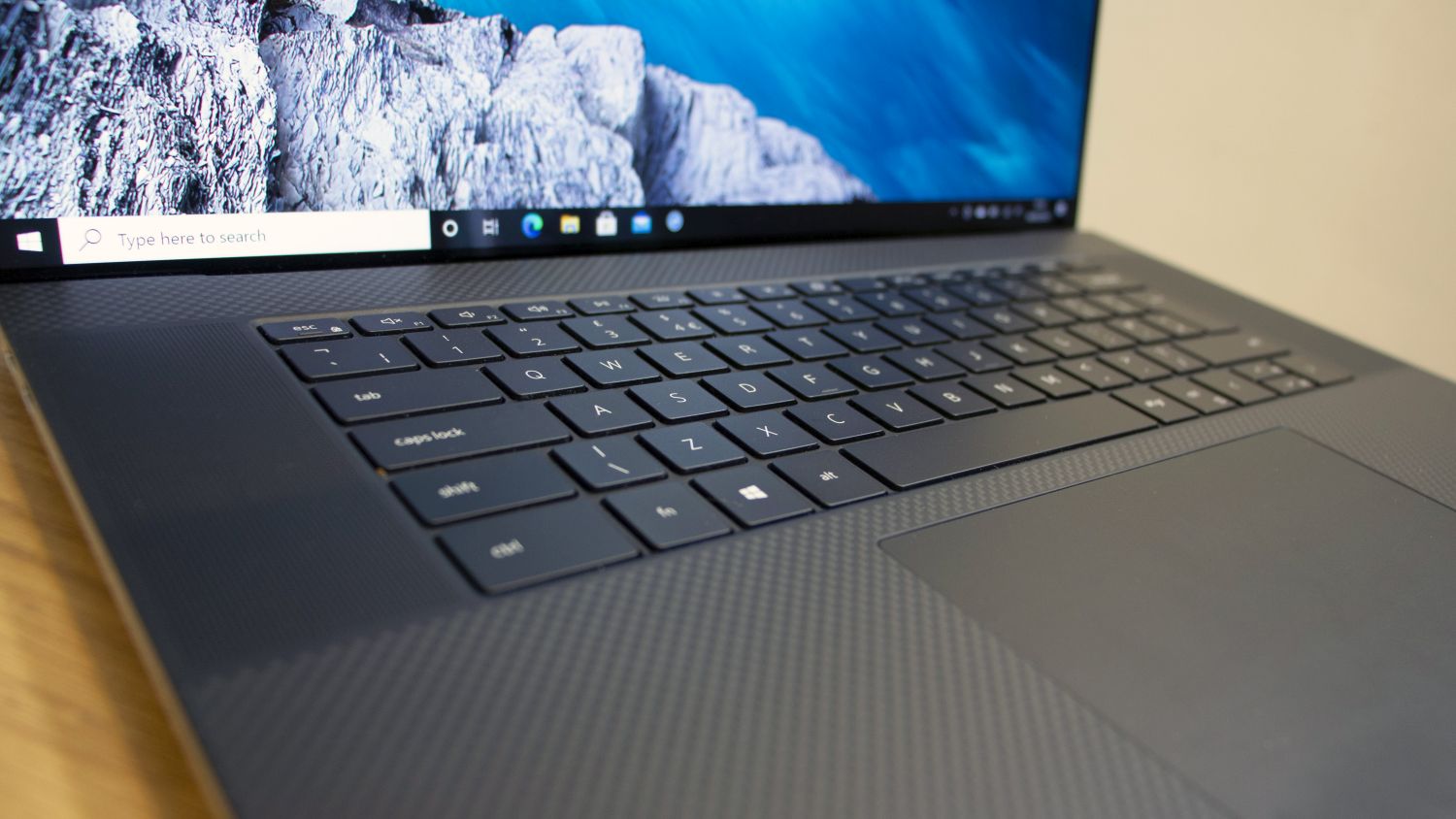

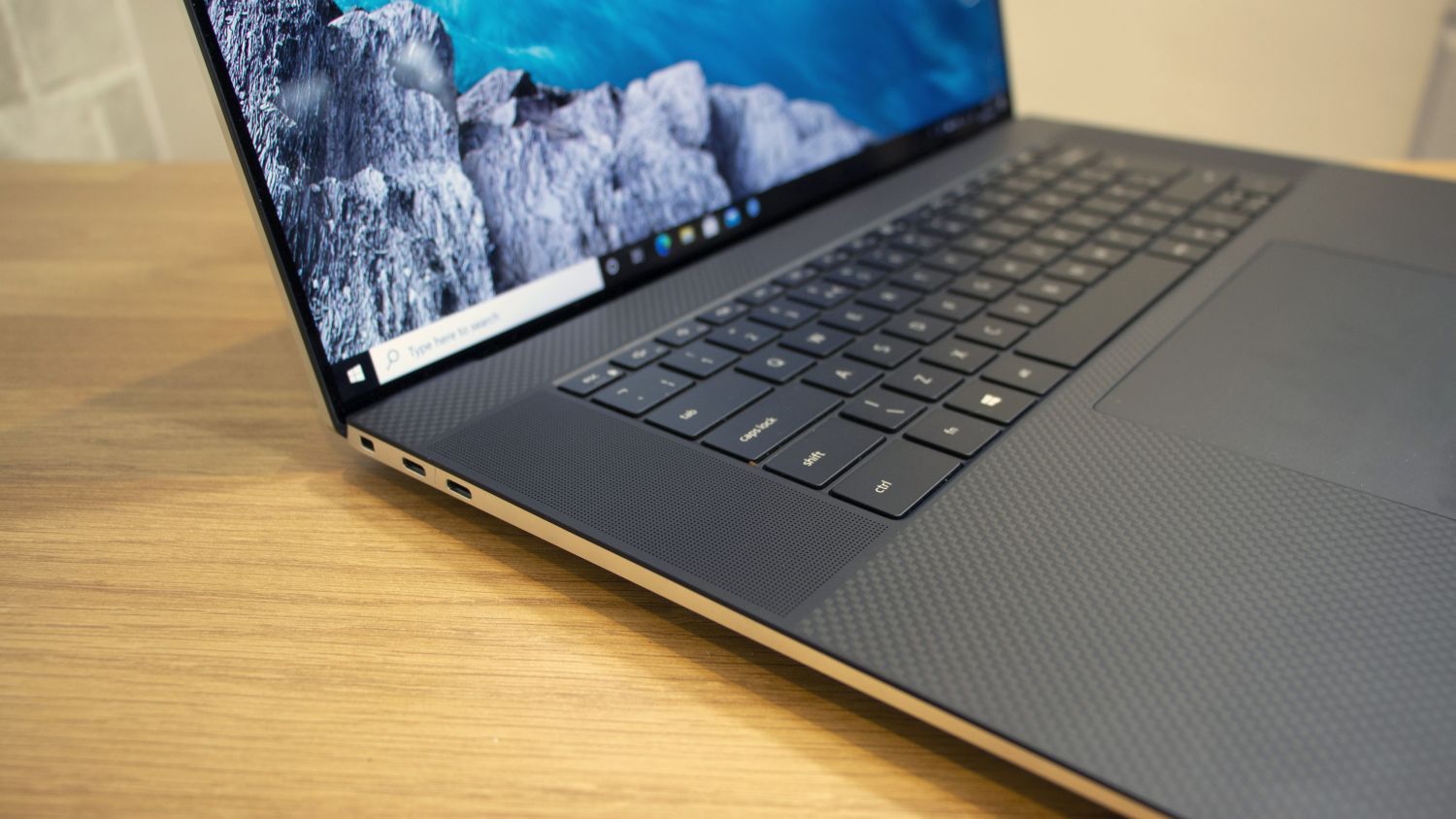
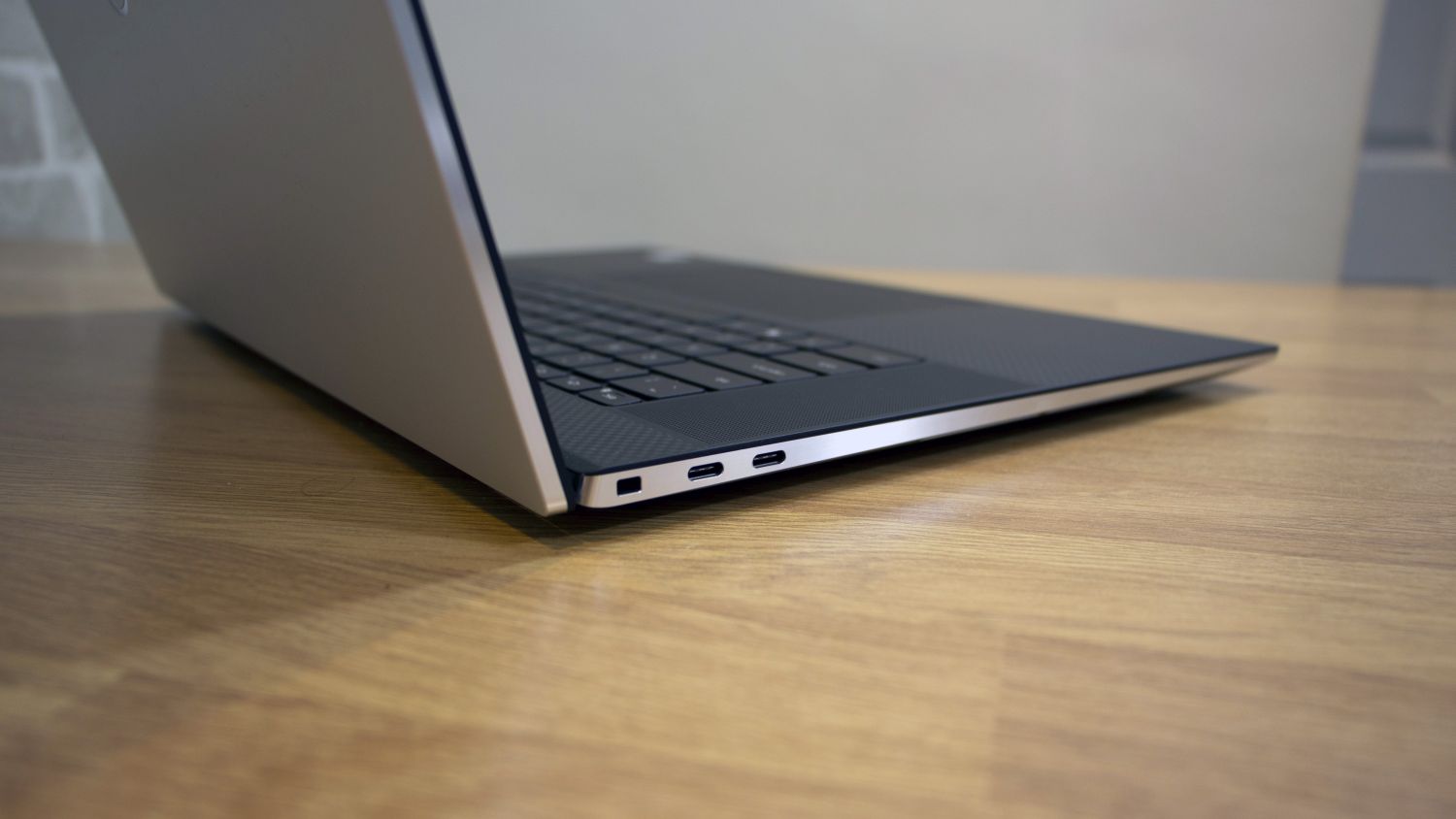

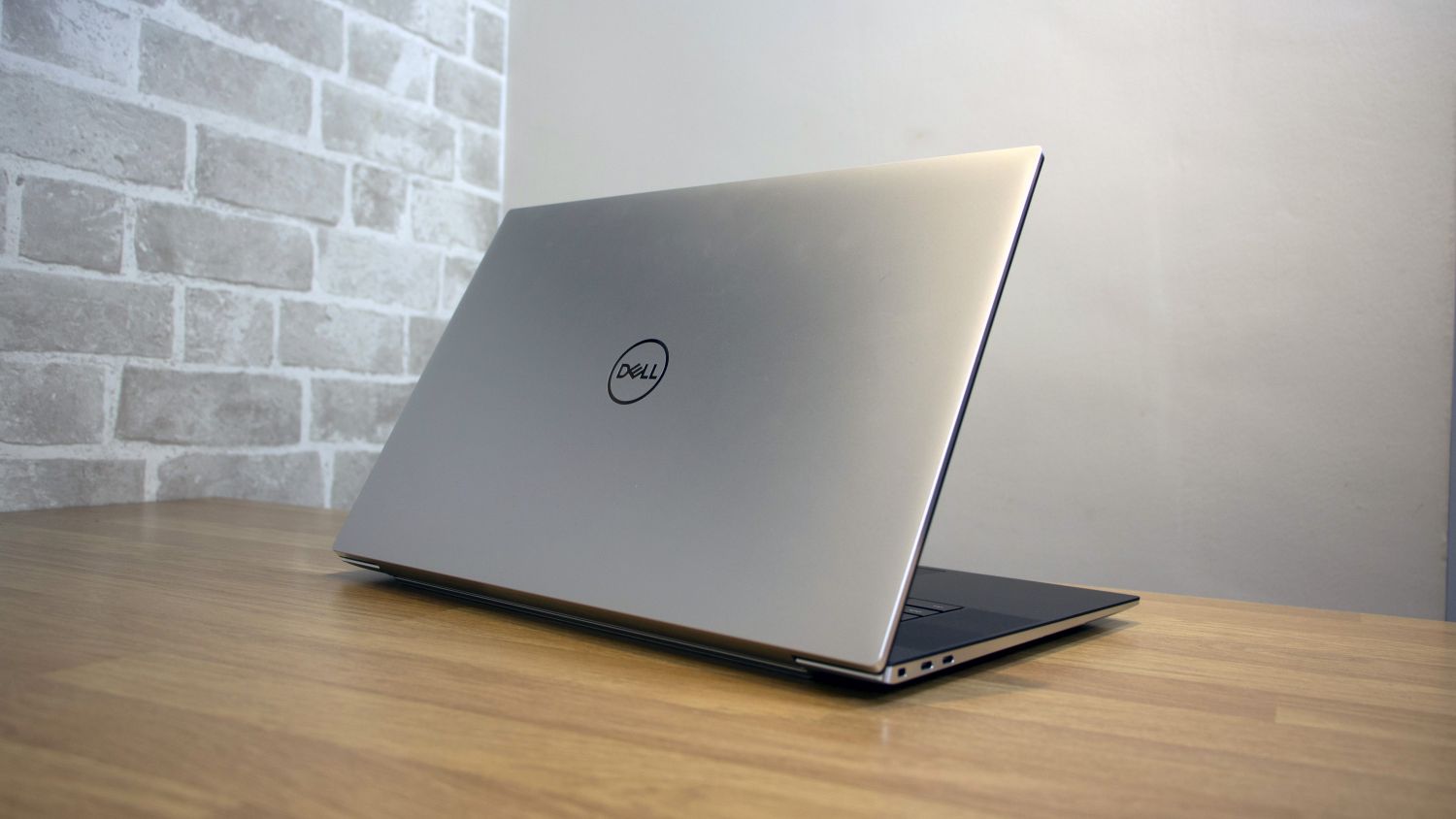
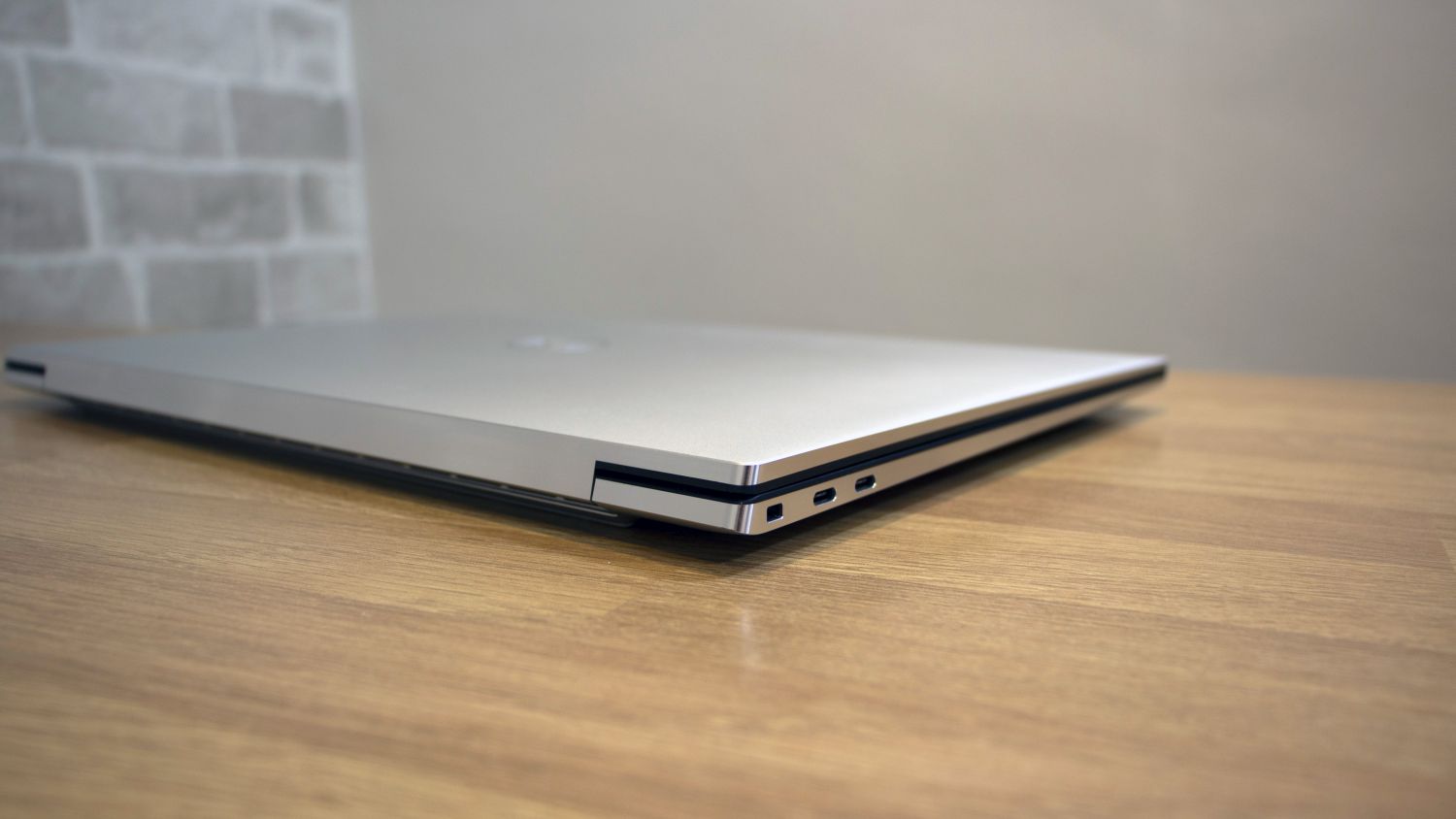
Dell's XPS machines always try to serve up a solid slice of productivity alongside a huge helping of top-notch design, and the Dell XPS 17 is the newest and biggest addition to this slate of attractive portables.
The big-screen experience means that this laptop may be good for content creation, but the specification reviewed here costs £2,416 exc VAT, which makes it one of the more expensive creative machines around.
Dell XPS 17 (2020) review: Design
A significant chunk of the budget undoubtedly goes towards design. Not much has changed when compared to older XPS models, but that's not a bad thing: the carbon-fibre coating, aluminium body and diamond-cut edges still look fantastic, and the Dell has great build quality in all areas.
Dell's machine looks attractive, and the design impresses in some practical departments too – starting with the unusually tiny bezels on all four sides of the display. That puts the panel front and centre, and it means the Dell is just 248mm deep and 374mm wide. Considering the 17.3in display, that's worth mentioning: it's barely bigger than the Apple MacBook Pro 16 and smaller than the Gigabyte Aero 17 HDR YC.
This laptop does weigh 2.5kg, though, which is only mediocre – it's lighter than the Aero, but significantly heavier than Apple's comparatively dainty machine.

Dell XPS 17 (2020) review: Keyboard & trackpad
This laptop uses the same brilliant keyboard as the XPS 15. The buttons are slightly concave and extremely comfortable, and the typing action is consistent and fast, with a near-perfect balance between softness and crispness. This keyboard is easily good enough for spending a whole day hammering through reports and emails, and it's paired with a large, accurate trackpad, although the buttons are a little soft.
Because this keyboard has been transplanted from the 15.6in model, it means there's no numberpad, and you've also got to put up with smaller cursor keys. That's a shame on a machine devoted to productivity – and even more so when you see how much space around the keyboard is given over to speakers.
The MacBook suffers similarly, with a great keyboard that has no numberpad. The Gigabyte, meanwhile, has a good typing action, a full-size numberpad and customisable RGB LEDs, but it's loud and the buttons are a little small.
Dell XPS 17 (2020) review: Display
As good as the keyboard is, the screen is where the XPS shines – quite literally. Unlike most laptops, the tiny bezels on all sides put this 17.3in screen centre stage, and this display's 16:10 aspect ratio means the Dell offers more vertical real-estate than Gigabyte's laptop. The MacBook has a 16:10 screen, too, but the resolution isn't as high as the 3,840 x 2,400 panel seen here, so the XPS display ends up looking sharper.
It also delivers excellent quality. The XPS hits a peak brightness of 531cd/m2 and a black point of 0.26cd/m2, which means a measured contrast ratio of 2,042:1. That's a brilliant result for any IPS display, and it has real-world ramifications, with fantastic vibrancy, loads of punch and admirable depth levels – as well as the strength to function indoors and outside.

Colours are top-tier. The XPS panel delivered Delta E and colour temperature results of 1.82 and 6,469K, with both figures good enough to ensure accurate colours. This screen rendered more than 99% of the sRGB and Adobe RGB gamuts, with volume levels easily over 100%. The only marginal weak point here is a DCI-P3 coverage level of 89.7%.
This display is easily capable of handling colour-sensitive design and photography work in all three gamuts, with sRGB and Adobe RGB abilities a particular strength. It's brighter and has better contrast than the Apple panel, and it also outshines the Gigabyte.
Dell XPS 17 (2020) review: Hardware & performance
Sadly, while Dell's machine makes a big impression on the outside, the internals are underwhelming. The Intel Core i7-10875H and Nvidia GeForce RTX 2060 inside this laptop are decent components, but they're both looking a little old and the GPU is a cut-back Max-Q version. The laptop also has a 1TB SSD and 16GB of memory, although 32GB would have been preferable in an expensive productivity machine like this.
The XPS returned a score of 240 in our benchmarks, which certainly isn't slow. There's enough processing power here to handle photo-editing, mainstream video and design work, office multi-tasking and as many browser tabs as you care to open. The SSD's read and write speeds of 3,272MB/s and 2,348MB/s are good, too, and they contribute to the XPS always feeling responsive.
The graphics card isn't sluggish, either: in the older Cinebench R15's OpenGL test (which has been cut from more recent versions) the RTX 2060 scored 138.85fps, which squeezes past the RTX 3080 included in the Aero 17. In 3D Mark's Fire Strike test the Dell scored 13,233, which is around 5,000 points slower than the newer RTX 3060 laptop chip and further behind the RTX 3080. This indicates that the RTX 2060 falls further back in more modern tests, but it's not a poor result. And, while the components in this machine can't compete with the RTX 3080 laptop core or with desktop cards in SPECviewperf, the Dell did offer reasonable pace in 3DSMax and a strong result in the Creo-02 rendering benchmark, which means that the XPS will excel in 3D modelling workloads.

The Dell also impresses in thermal tests. The exterior remained cooler than most high-end laptops during tough work benchmarks, and the fans kept quiet throughout. The processor also didn't suffer from any serious throttling issues, with performance levels maintained in prolonged testing.
Battery life is equally good. In our video playback test the Dell lasted for 10hrs 17mins, which is almost four hours better than the Gigabyte and three hours beyond the Intel-based MacBook. It also lasted for nine hours in an undemanding work benchmark and three hours with the processor pushed in a tougher work test. You may not make it through a full day depending on how you use this machine, but the Dell does have more longevity than its rivals.
It's not a bad bill of health for the Dell, but if you look beyond the XPS some of its performance levels start to seem ordinary. It scored 1,293 and 7,661 in Geekbench, which are solid results. However, the MacBook is set to be updated later this year with the M1 processor that scored 1,724 and 7,476 in the latest MacBook Air – and Apple will likely extract more speed from that chip inside the MacBook Pro 16. It's also easy to find AMD-based laptops that are even faster in multi-threaded workloads.
You don't necessarily have to spend more to get some of that extra performance. A Gigabyte Aero 17 with the i7-10875H, an RTX 3070 graphics core and 32GB of memory costs £2,249 exc VAT, and machines with a faster AMD Ryzen 9 processor are usually cheaper than the Dell.
Happily, Dell's high-end design is also available in more affordable specifications. The entry-level model combines a Core i5 processor, a Full HD screen and Intel's integrated GPU at £1,799, and a mid-range model with the i7-10750H, the 4K display and a GTX 1650 Ti graphics costs £2,599. You can also opt for a model with a Core i9 CPU and the RTX 2060 for £3,199, although that will only provide a modest boost to CPU performance.

Dell XPS 17 (2020) review: Ports & features
The XPS 17 includes a quartet of Thunderbolt 3/USB-C ports that deliver power and are used to charge the machine, and elsewhere the Dell has an SD card slot, a Windows Hello-compatible webcam, TPM 2.0 and a power button with a built-in fingerprint reader. It's got Wi-Fi 6, and the base panel can be removed so users can access pairs of memory and M.2 sockets. The speakers are also good, with punchy bass and clear, vibrant mid-range, so they'll easily handle media.
This set of features has notable omissions, though. There's no wired internet, and no full-size USB ports. Dell includes an adapter with USB-A and HDMI sockets, but you may have to use more adapters depending on your peripherals. The webcam has no privacy cover, and there's no keyboard shortcut to disable the camera.
Apple's machine is similar, with loads of Thunderbolt ports, but the Gigabyte is better if you need more conventional options – it has full-size USB ports, 2.5Gbps Ethernet and a webcam with a privacy cover, albeit in an awkward position below the display.
Dell XPS 17 (2020) review: Verdict
The Dell XPS 17 features stunning visuals, a fantastic 4K screen that can handle any creative work task and good battery life alongside a satisfying keyboard.
In many ways, though, the XPS is also underwhelming. The components are good, but outpaced by more modern silicon, and the aesthetic is undermined by missing features and extra weight. It's also expensive: the nearest Gigabyte equivalent is faster, has more features and is cheaper, and a Core i9-based MacBook Pro costs £2,332 exc VAT.
If you've got money to burn on a brilliant screen and a sleek, stylish design, then the Dell XPS 17 is a worthwhile creative machine – it'll handle those tasks comfortably, and look good doing it. But more features and power can be found elsewhere without much effort.
Dell XPS 17 (2020) Specifications
| Processor | 2.3GHz Intel Core i7-10875H |
| RAM | 16GB DDR4 |
| Graphics | Nvidia GeForce RTX 2060 Max-Q Graphics |
| Storage | 1TB SK Hynix PC611 SSD |
| Display | 17.3in 3,840 x 2,400 touch IPS |
| Operating System | Windows 10 Pro 64-bit |
| Connectivity | Dual-band 802.11ax WiFi, Bluetooth 5.1 |
| Ports | 4 x USB 3.2 Gen 2 Type-C/Thunderbolt 3, 1 x SD, 1 x audio |
| Dimensions | 374 x 248 x 19.5mm (WxDxH) |
| Weight | 2.5kg |
| Warranty | 1yr RTB |
Get the ITPro daily newsletter
Sign up today and you will receive a free copy of our Future Focus 2025 report - the leading guidance on AI, cybersecurity and other IT challenges as per 700+ senior executives
Mike Jennings has worked as a technology journalist for more than a decade and has been fascinated by computers since childhood, when he spent far too long building terrible websites. He loves desktop PCs, components, laptops and anything to do with the latest hardware.
Mike worked as a staff writer at PC Pro magazine in London for seven years, and during that time wrote for a variety of other tech titles, including Custom PC, Micro Mart and Computer Shopper. Since 2013, he’s been a freelance tech writer, and writes regularly for titles like Wired, TechRadar, Stuff, TechSpot, IT Pro, TrustedReviews and TechAdvisor. He still loves tech and covers everything from the latest business hardware and software to high-end gaming gear, and you’ll find him on plenty of sites writing reviews, features and guides on a vast range of topics.
You can email Mike at mike@mike-jennings.net, or find him on Twitter at @mikejjennings
-
 ‘Phishing kits are a force multiplier': Cheap cyber crime kits can be bought on the dark web for less than $25 – and experts warn it’s lowering the barrier of entry for amateur hackers
‘Phishing kits are a force multiplier': Cheap cyber crime kits can be bought on the dark web for less than $25 – and experts warn it’s lowering the barrier of entry for amateur hackersNews Research from NordVPN shows phishing kits are now widely available on the dark web and via messaging apps like Telegram, and are often selling for less than $25.
By Emma Woollacott Published
-
 Redis unveils new tools for developers working on AI applications
Redis unveils new tools for developers working on AI applicationsNews Redis has announced new tools aimed at making it easier for AI developers to build applications and optimize large language model (LLM) outputs.
By Ross Kelly Published
-
 Google layoffs continue with "hundreds" cut from Chrome, Android, and Pixel teams
Google layoffs continue with "hundreds" cut from Chrome, Android, and Pixel teamsNews The tech giant's efficiency drive enters a third year with devices teams the latest target
By Bobby Hellard Published